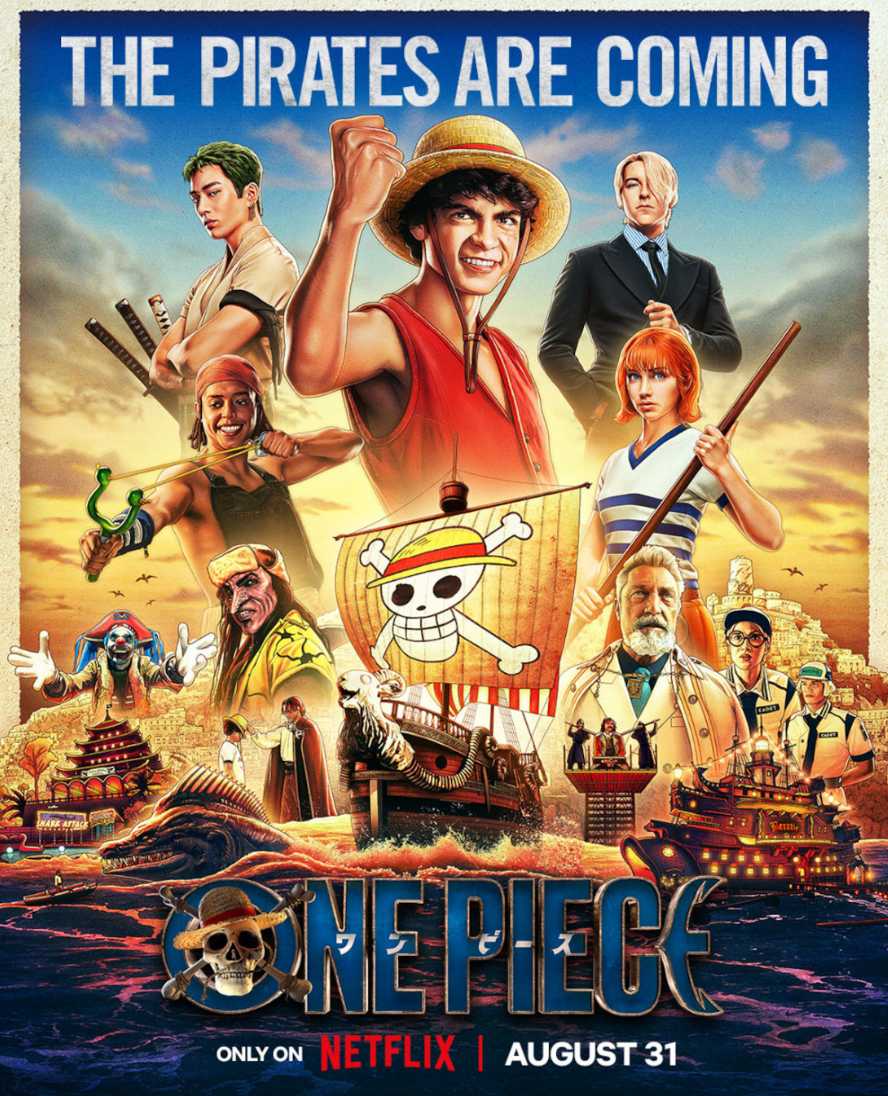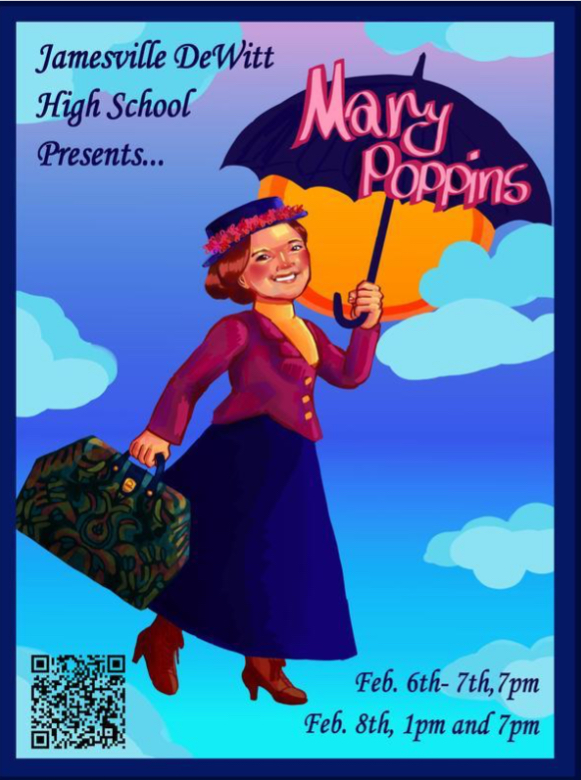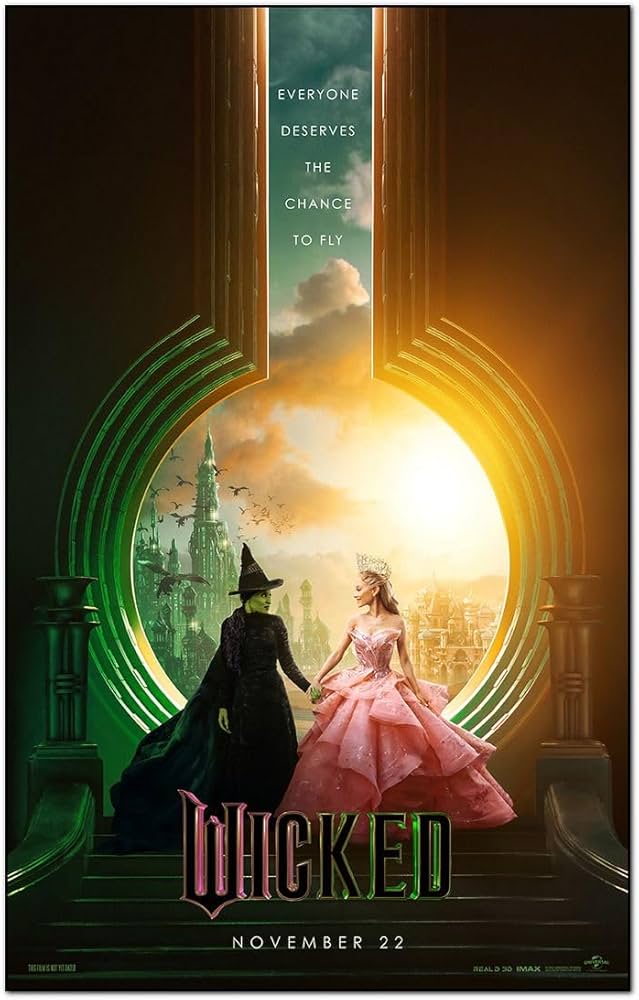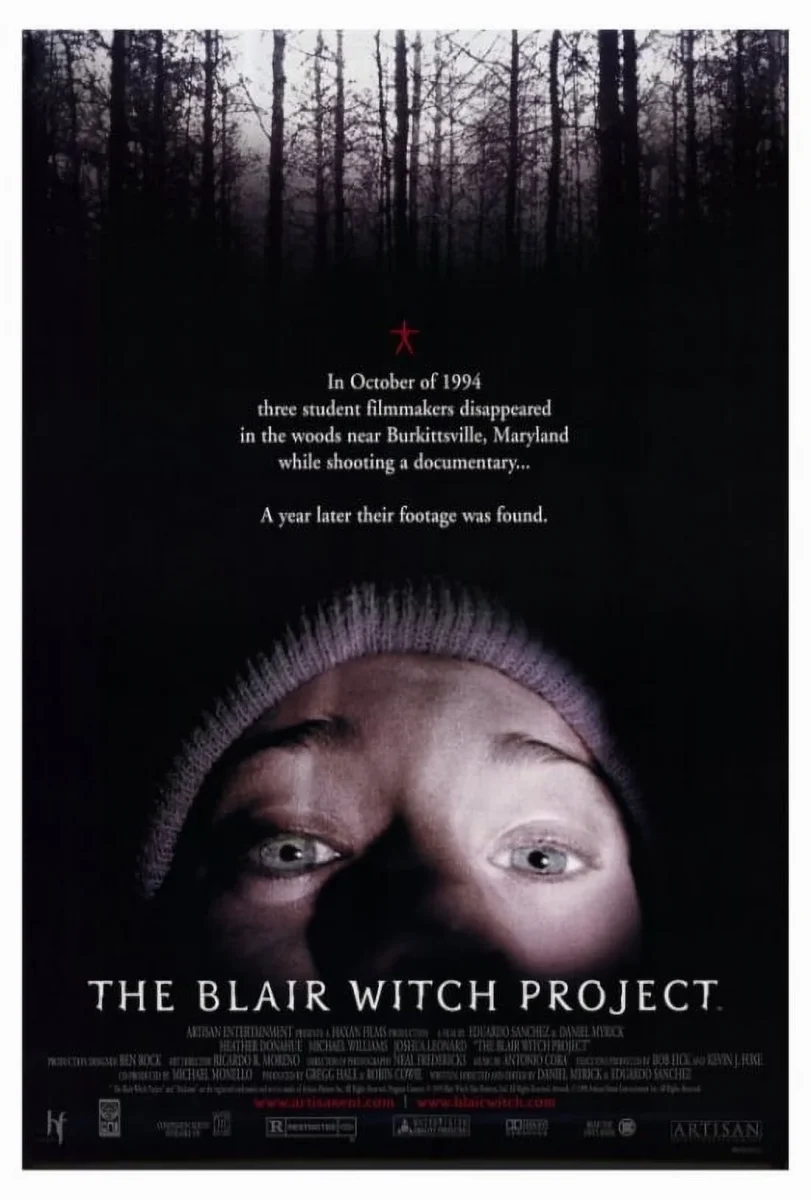By Contributing Writer Udochukwu Okereke (’27)
Right at the end of August, the live-action “One Piece” series was released on Netflix. It is, of course, an adaptation of the “One Piece” manga, a series of over 1000 chapters and counting. I haven’t been a fan of the franchise for long, as I’ve only seen around 200 episodes of the anime (which is a drop in the bucket compared to how long the series is), but I can say that the “One Piece” live action series is (slightly) better than I expected.
The live action series at this point has gone over the first few arcs the manga has, where our protagonist, Luffy, starts his journey to become king of the pirates and find the One Piece by heading to the Grand Line, a dangerous strip of ocean that runs all the way around the world. Along the way, Luffy starts to gather up a crew through various adventures across several islands. These fine individuals are his first mate Zoro the Pirate Hunter, a famous bounty hunter that fights to become the greatest swordsmen in the world, Nami, an excellent navigator that dreams of someday charting the globe, Usopp, a sharpshooter and pathological liar who dreams of being a great and brave warrior, and Sanji, the best cook in the East Blue Sea.
Morgan Davies and Iñaki Godoy as Koby and Luffy respectively, still from the series. Photo courtesy of Netflix
The live-action series had to do a lot in an eight episode run, having to adapt 95 chapters from the manga (44 episodes from the anime). Luckily, they had the help of Eiichiro Oda, creator of “One Piece”, in the making of the series. I will say that because of the short run time, several slightly minor details were taken out of the story. This might not seem like a big deal, but you have to remember that each episode or two of the live-action series is adapting an entire arc from the manga, so it really adds up. It causes the characters to lose some of their motivations, as well as important details in their backstories and development. For example, in the manga and anime, Zoro has a much deeper connection with a little girl he defends. When the girl got in trouble with the Marines, her and her mother were going to be punished, but Zoro stuck up for them and chose to undergo their punishment to protect them. However, in the live-action series, Zoro still defends the little girl after she gets in trouble, but is only taken into custody because of his refusal to join the Marines. Character introductions are also much different. For one, Nami is officially introduced much earlier than she was in the other iterations. In the anime, her appearance is teased until Luffy and Zoro get to Orange Place, but live action Luffy, Zoro, and Nami meet at the marine base in Shells Town right off the bat. This causes many story beats to shift around from what it was in the anime and manga. It can be a confusing experience for someone like me, coming from the anime to the live-action, although I’m 100% sure it would be just as confusing the other way around.
Mackenyu as Roronoa Zoro, still from the series. Photo courtesy of Netflix
Speaking of parts of the story shifting, the show’s tone is much, much less comedic and far more grounded. “One Piece,” whether the manga or anime, has always had comedy in it (and lots of it), so having the story be more serious and realistic takes away from the whimsy of the “One Piece” world. Don’t get me wrong, the live-action series can be funny, but it just feels a bit too solemn for “One Piece”. Changing the tone also changed the story in major ways. In the anime, there is a lot of censorship because it was made with the intention of kids watching. In the live-action series, they undo that kid-focused mindset, leading to plenty of events that take place in the manga and anime being changed because they wouldn’t fit the new tone. This was an issue for me, as removing some of the wacky and nonsencial moments from the anime and manga caused many story beats to completely change into “reasonable” versions of them. This causes the series, as it goes on, to become increasingly different from the manga in ways that don’t totally make sense to me. For example, the crew needing Buggy to help them find Nami not only doesn’t make sense, but also wouldn’t have been necessary if characters that were deemed too absurd for the show were present.
Emily Rudd as Nami, still from the series. Photo courtesy of Netflix
Though there are plenty of changes to the plot that I dislike, it’s balanced out by certain improvements. Since a lot of nonsensical plot points were replaced, many of the villains seem much more intimidating. Buggy is the best example of this. Buggy almost drowns Luffy in a torture device in a very tense moment that doesn’t happen in the manga or anime. The choice to have this happen makes Buggy more imposing and a far stronger foe. Other problems the anime and manga have are fixed too. In almost every big fight scene of the manga and anime, Luffy is taken out of them in some way (often temporary incapacitation) to prolong the fight. I find these moments to be extremely unnecessary. To my relief, none of them happen in this show. In general, the live action show doesn’t waste any of my time, which I greatly appreciate.
Next up is the cast, and to me, they are the best part of the show for me. They are all wonderful for this show, and you can really tell each actor was hand-picked by Oda himself. They fit each and every character perfectly and bounce off each other’s energies well too. Iñaki Godoy has got to be my favorite of the cast members. He embodies Luffy’s dumb, courageous, inspiring, and adventurous personality to a tee.
Taz Skylar as Sanji, still from the series. Photo courtesy of Netflix
Furthermore, this show looks amazing. Honestly, it looks way cooler than the anime. I was worried the show itself wouldn’t look or feel as vibrant and colorful as the original, but those worries quickly dissipated after watching the first few scenes. The look of each set is stunning, and the locations are also more distinct from each other. Orange Town, Syrup Village, and Cocoyasi Village don’t look the same anymore, with plenty of easily distinguishable differences. The costume design is also notable and extremely accurate (although none of the character designs were too complicated in the first case). Unlike the anime and manga, all the characters change outfits each episode. Though this doesn’t make that much sense logistically, as I highly doubt Luffy or Zoro have more than a single set of clothes to their name, each outfit actually looked like something that character would own if they weren’t wearing the same pieces of clothing every episode (excluding Nami as she has some sense to change after every arc).
Jacob Gibson as Usopp, still from the series. Photo courtesy of Netflix
So, the show looks great, but how does it sound? Well the soundtrack is certainly pirate-y, but does it instill that same feeling you have when you are listening to the original One Piece tracks? Not really, at least not for me. The tracks aren’t bad, they’re just missing a little something. I wish most of the tracks were grander too, as most of them aren’t memorable because of their lack of grandeur. Comparing the new tracks in the show to the ones in the anime, it’s clear to hear how the new ones flopped in being noteworthy. They really just don’t leave me with any strong emotions. Put simply, they’re way too bland.
I enjoyed plenty of things this live action anime had to offer. The cast is stellar, I love the costume and set design, and the transfer of each location and character from animated to live action is truly impeccable. The music doesn’t live up to my own personal taste, but it’s able to do its job well enough. The story is a bit puzzling if you know what the anime and manga’s plot is, but it stands on its own very well enough if that context is disregarded, making the show one of the best live-action anime out there.




































